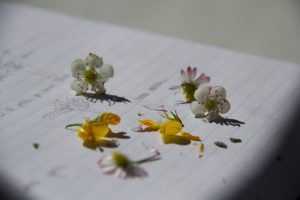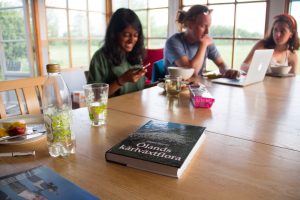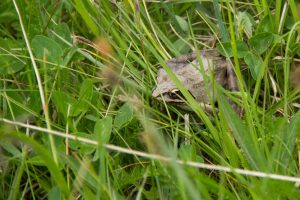This is the second in a series of blog posts from Whitties studying on Whitman’s Crossroads: Pollination Biology in Sweden program this summer with Professor Heidi Dobson. Natalie Mutter ’20 plans to major in biology.
Hej hej!
Greetings from Station Linné. We’ve just finished our third day of classes on Ӧland, and the time has flown by. Hearing of the groundbreaking and influential research that has been conducted here in the past, as well as projects that are underway presently, I feel incredibly grateful for the opportunity to study pollination biology here with great friends, scientists, and mentors. From beginning our first project on plant breeding systems to pinning our first insects, we have leapt into the biological wonderment of Ӧland. Although these projects are the center of the experience here at the station, we have also found that living in a new place provides all kinds of learning opportunities.
Our time at the station is spent mostly in the lecture space, the field, or the lab, and we share meals and conversation in good company in the dining room. Wide, tall windows line three walls, welcoming in an extraordinary amount of light.
The sunsets have encouraged me to go running later in the evening, as the sun sets around 21:30. This image shows the setting sun on the day of our arrival to Ӧland, with one of the three Swedish flags that stand at the front of the station blowing in the wind. The roads surrounding the station wind through strawberry and lucerne fields, with houses dotting the land with red and white. Cows and sheep graze in pastures edged by rock walls, and the nightingales sing incessantly.
In the field, we have been learning to identify members of several plant families we have studied in lab. Students observe and identify the various parts of the flowers on a honeysuckle in the image above.
We are immensely lucky to be present on Ӧland when the orchids in bloom. In the field next to the station, several species of orchids are blooming in columns like these. The orchid family (Orchidaceae) is one of the first families with which we became acquainted during our first lab here at the station.
Frogs and caterpillars lurk in the grasses. As Professor Dobson said in the field yesterday, “if you sit and wait, you can see life unfolding around you”. I must tread carefully as I walk – buttercups and daisies bloom everywhere.
In the above image Professor Heidi Dobson and student Ian Gingerich (‘19) identified members of plant families in the field just outside of the station. We collected flowers from different families to see the variation in the arrangement and design of their sepals, petals, stamens, and pistils.
Back in the lab, we examined the specimens closely under dissecting microscopes, drawing cross-sections and writing detailed notes in our field notebooks for reference to the families we had just learned.
Although we have only been on Ӧland for four days, we have packed an impressive amount of learning and adventure into our time here. I look forward to continuing work on our research projects and learning more about the complex mechanisms that create and sustain so many forms of life in our world.





